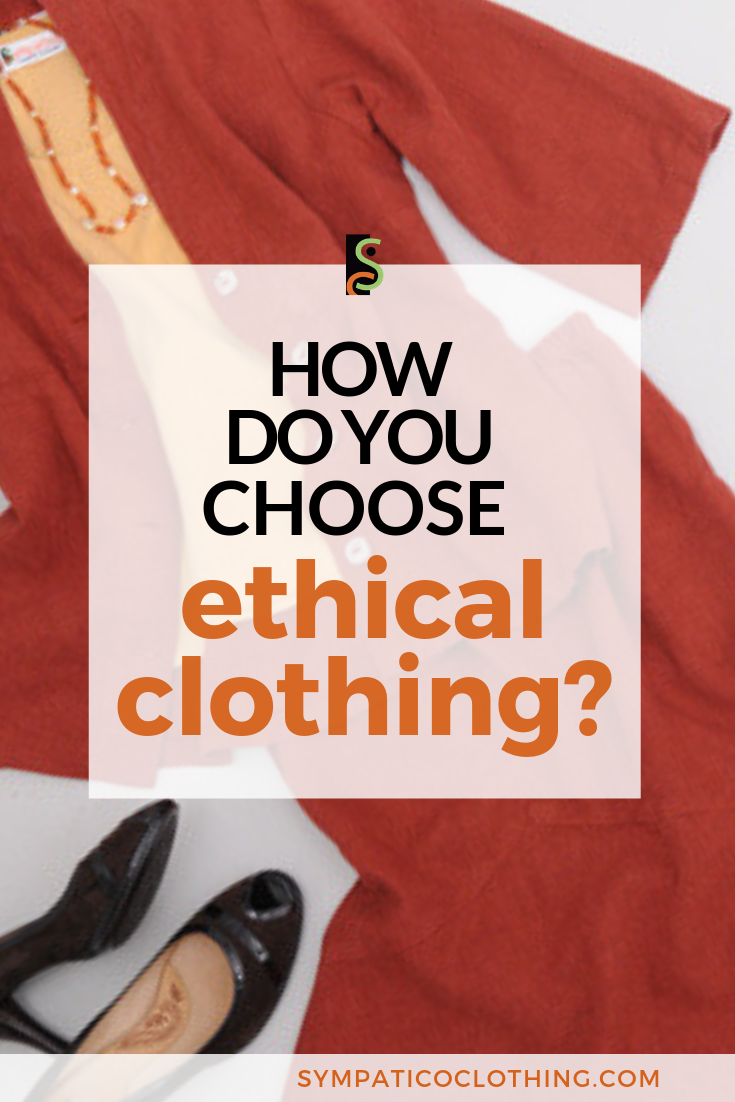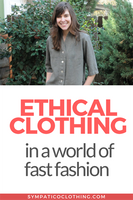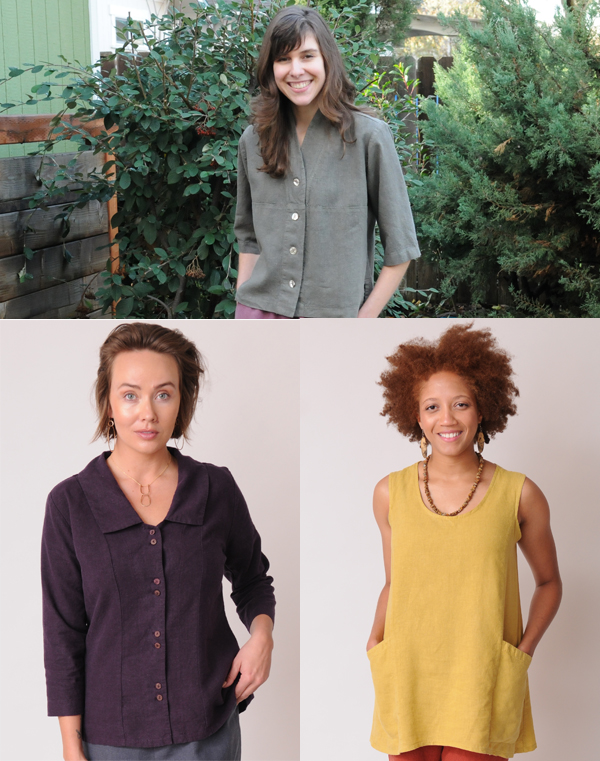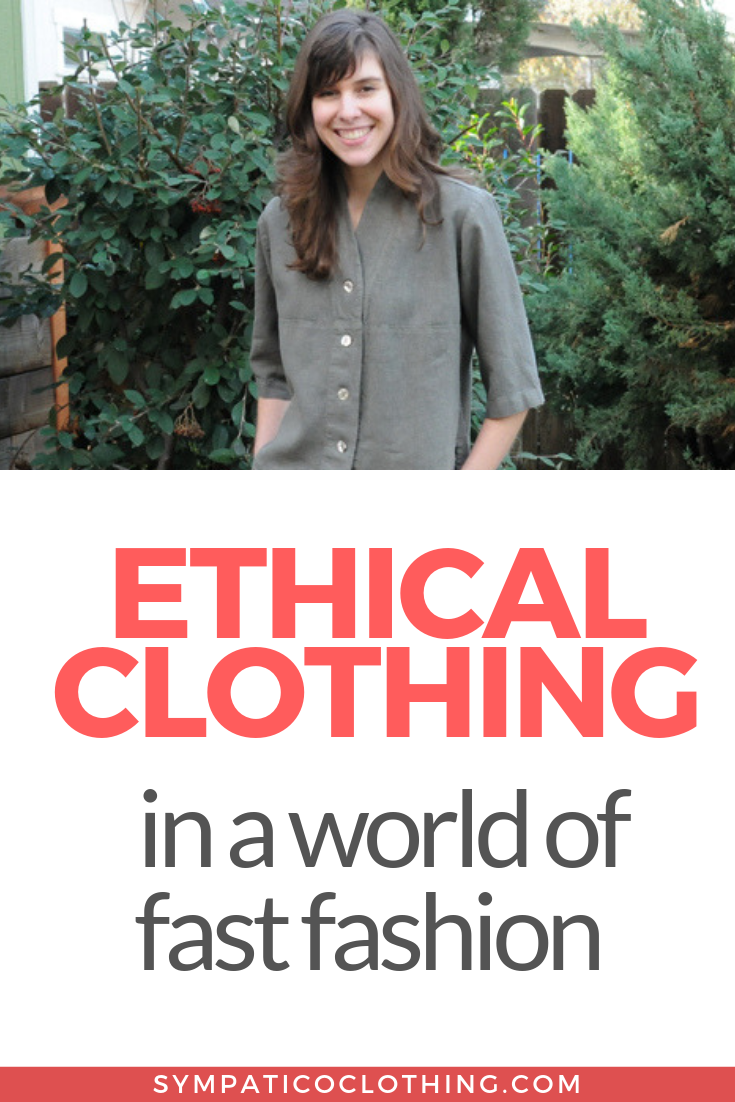How to Spot Ethical Clothing
Posted by Rose on 20th Jul 2022
Some tips for identifying apparel that’s made ethically and sustainably.
As a conscious consumer you likely seek out ethical clothing companies. Companies whose practices are eco-friendly and protect the health of workers while paying them fairly. But due to the globalization of apparel making, it can be tricky figuring out whether what you find on the rack is actually ethically made or not. Here are some tips for making that call.
Sympatico's line of ethically made hemp and Tencel tops are built to last.
What’s ethical is also eco-friendly
Ethical clothing brands don’t merely pay lip service to eco-friendly practices, they embody them. Clothing manufacturing is among the largest pollution sources (after the oil industry) so asking critical questions and digging deeper can help separate truly sustainable clothing from mere marketing.
To decide if a given garment is ethically produced requires taking a complete view of all the factors that go into its production and life cycle.
For natural fiber fabrics that starts with the way crops are grown; for synthetic materials or manufactured fabrics, look at the chemicals and processes used to make them.
But it hardly ends there. The impact of the garment on our ecosystem continues long after it’s manufactured. From dyeing to fabric distressing effects, clothes exact an environmental toll after they’re initially cut and sewn too. This even extends to the energy consumed and pollution generated by laundering the garment and this is another place beyond the initial buying decision where consumers can exert their power by laundering less frequently.
As I recently blogged about, microfibers shed by petrochemical-derived textiles are polluting our oceans, rivers and drinking water at an alarming rate while doing grave harm to aquatic life.
But it’s not so simple as opting for natural fibers exclusively. Unfortunately, conventional cotton is grown using a lot of pesticides, synthetic fertilizers, and copious amounts of water. Though organic cotton dispenses with the chemicals, it still requires all that water. Better choices include hemp, flax, and the manufactured fiber, Tencel. All are grown without artificial fertilizers or pesticides and only require modest amounts of water. In the case of Tencel, all the compounds used to process the fiber are safely returned to the environment after being treated in an algae-based system.
Sympatico’s fabric is a blend of hemp with Tencel that combines hemp’s great strength and durability with Tencel’s softening effect that adds drape and luster to the fabric. You probably have also seen bamboo-derived fabrics that are called “green.” However, real eco-friendliness is in the details. Unlike Tencel with its closed-loop manufacturing system (with rare exceptions) the chemicals used to break down bamboo’s cellulose are highly toxic. (That’s true for rayon fabrics too.) That’s part of the ethical clothing equation: digging into the details to get at the actual impacts of various clothing choices.
Ethical clothes will last
Fast fashion is focused on producing apparel at the lowest possible cost. Little concern is given to durability or repairability. It’s all about the bottom line. Fast fashion is created to be worn a few times and tossed or passed on. We are awash in discarded fast fashions these days. Not only does the world have to deal with the environmental consequences of manufacturing throwaway clothes, our landfills are overflowing with them. Most fast fashion makers use such shoddy materials and assembly methods that thrift stores and even third-world nations don’t want it.
Conversely, truly ethical clothing is made to last. Materials are of high quality as are sewing and assembly techniques. Finishing details such as zippers and buttons work flawlessly and are durable. Ethical clothing designers create their shapes with an eye to comfort and breathability while seeking out looks that won’t be outdated with the next fast-fashion cycle. Ethical clothes are meant to be cared for, repaired and enjoyed for many years, and when their useful life is over, their components can be returned to the earth or recycled.
How to tell if it’s ethical
Reading a label or hangtag in the clothing store is unlikely to reveal much other than fiber content and the place a garment was assembled. To learn more about the garment’s fibers as well as the manufacturer’s practices will take more digging. In some cases, visiting the manufacturer’s website can reveal more details, but beware of greenwashing. Look for concrete statements about how the clothes are made and the people are paid.
Truly ethical clothing makers, large and small, are transparent about their sourcing of materials and labor. The Ecolabel Index is a valuable resource for checking on eco-friendly claims. You’ll find details and links to more than 400 certification programs around the world that rate companies for their environmental and labor practices.
Because so much of our clothing industry has been exported offshore, it’s quite challenging to confirm claims about worker safety, health, and pay. Even shopping made-in-USA brands does not guarantee that workers are fairly compensated and protected from health hazards. That said, you can consult the Fair Trade Federation and Fair Trade Certified websites. These organizations establish standards and promote fair labor practices around the world. Green America is a source I love for finding ethical companies.

Share:







